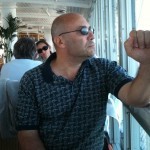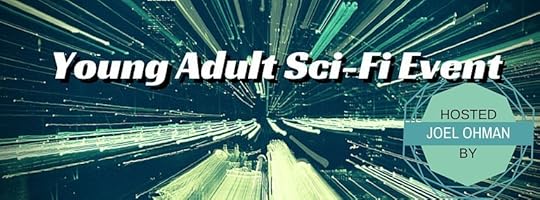Massimo Marino's Blog: The Ramblings and the Rumblings, page 11
April 11, 2015
Mission of Gravity – Hal Clement
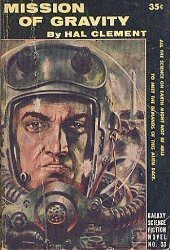
 Hal Clement, also known as Harry Clement Stubbs, was born in Somerville, Massachusetts, in 1922 and published his first science fiction story in Astounding Science Fiction in 1942, a year before graduating in astronomy.
Hal Clement, also known as Harry Clement Stubbs, was born in Somerville, Massachusetts, in 1922 and published his first science fiction story in Astounding Science Fiction in 1942, a year before graduating in astronomy.
After serving as a USAF bomber pilot, with 35 missions over the Nazi Germany, Clement remained in the Air Force as a teacher of astronomy and chemistry at the Milton Academy.
Under the pseudonym George Richard he also produced a number of astronomical illustrations, but his fame is tied to science fiction, and has been awarded, in 1998, the title of Grand Master.
He left us in 2003.
As a writer, Hal Clement has had a great influence over the evolution science fiction, his numerous works have opened a path followed by many: Mission of Gravity is the novel that marks a milestone in his career and in hard science fiction.
is the novel that marks a milestone in his career and in hard science fiction.
Barlennan, brave captain of the vessel “Oceanic”, came into contact with alien visitors, and is now communicating with them, after having brought his ship near the equator, a secluded and little known place but dangerous.
The seas routes traveled by Barlennan are not composed of water, and the commander is very different from any of the terrestrial explorers. Barlennan is a species of an armored arthropod, fifty centimeters long, forged by the terrible living conditions of Mesklin, a planet of an enormous size, with a gravity at the poles of about 700g and a very short rotation period, so much so that one day only lasts about twenty minutes, and the surface is swept by hurricanes of unimaginable violence.
In the story, the aliens are human, cosmonauts whose ship can land and get off the planet only near the equator, where the centrifugal force due to gravity is “only” 3g, and to survive on the surface they have to wear pressure suits.
The human scientific mission has lost control of a probe of the value of two billion dollars, and is unable to recover it since this is has landed on the south pole of the planet. This is why the humans think of using the aid of Barlennan.
Thus begins a fantastic recovery expedition which sees mesklinians and humans work together to face and overcome the dangers that stand between them and their mission.
Thanks to a remarkable scientific preparation, Clement has built the planet Mesklin out of fantasy, sure, but the world and its biosphere is consistent with scientific knowledge.
How this giant of the skies was born is described by the author himself in the afterword of the novel, a short but extremely interesting article entitled The Spinning Top World, in Clement explains how the discovery of an astral body in the dual system of 61 Cygni has been the starting point for the construction of his Mesklin.
Once fixed in a scientifically plausible way, the characteristics of the planet enabled Clement to set the plot and the characters’ psychology: on Mesklin, concepts such as flying and flying objects are nonsense, and the fear of falling is for all mesklinians a real nightmare.
The author, however, does not travel all the way into the different, alien mesklinian mentality: the inhabitants of the planet adapt too quickly to new ideas, e.g., see the scene in which they try to carry Lackland, the human astronaut, over an iron plate, and the “intellectual convergence” between mesklinians and humans sounds a bit ‘forced'; despite all this, Barlennan remains — after more than half a century — one of the most remarkable aliens in the history of science fiction.
Some of the explanations in the history are a bit too long, and the story would have probably gained much verve from an “à la Jack Vance” approach, author traditionally not too focused on scientific verisimilitude, but I assume that Clement has worried more than it was necessary to make the reader understand the strange conditions of its creation rather than carrying the reader from a plot twist to another.
With little doubt, this is the most important work of Clement, and prototype for dozens of worlds built — in science fiction stories — with a rigorous logic, with the structure of a plausible ecosystem, and as a scientific possibility.
The novel is at half-way between those who prefer action-driven adventures with little pauses — for whom the novel will not be considered a masterpiece — and those who prefer hard science fiction, with rigorous scientific aspects of the story, and little space for fantasy and pseudo-magic-science.
Those who have read and liked other Clement’s stories, will love this novel, and maybe will agree with me that it is Clement at his best.
Massimo Marino is a scientist envisioning science fiction. He spent years at CERN and The Lawrence Berkeley Lab followed by lead positions with Apple, Inc. and the World Economic Forum. He is also co-founder of “Squares on Blue”, a Big Data Analytics service company.
Massimo currently lives in France and crosses the border with Switzerland multiple times daily, although he is no smuggler.
As a scientist writing science fiction, he went from smashing particles at accelerators at SLAC and CERN to smashing words on a computer screen.
He’s the author of multi-awarded Daimones Trilogy.
His novels have received the Seal of Excellency from both AwesomeIndies.net and IndiePENdents.org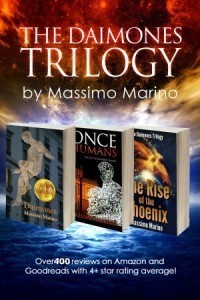
• 2012 PRG Reviewer’s Choice Award Winner in Science Fiction
• 2013 Hall of Fame – Best in Science Fiction, Quality Reads UK Book Club
• 2013 PRG Reviewer’s Choice Award Winner in Science Fiction Series
• 2014 Finalist – Science Fiction – Indie Excellence Awards L.A.
• 2014 Award Winner – Science Fiction Honorable Mention – Readers’ Favorite Annual Awards
His novels are available from Amazon, Barnes & Noble (Nook), iTunes Apple Store, and many other retailers around the world.
Join his mailing list for new releases, or follow him on Facebook, Google+, and Twitter.
The post Mission of Gravity – Hal Clement appeared first on § Author Massimo Marino.
April 8, 2015
Roma Eterna – Robert Silverberg
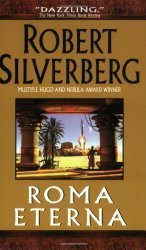
 The relationship between Robert Silverberg and science fiction was one of those difficult and complicated marriages, started in 1955 with Revolt on Alpha C
The relationship between Robert Silverberg and science fiction was one of those difficult and complicated marriages, started in 1955 with Revolt on Alpha C , a novel for teenagers (today we call them YA) who talk about space cadets and their first training cruise… would you be able to imagine anything more obvious?
, a novel for teenagers (today we call them YA) who talk about space cadets and their first training cruise… would you be able to imagine anything more obvious?
The initial production of Silverberg had not detached from the canons of the classic space adventure, but even at this early stage Silverberg put on display excellent qualities as a writer: in 1956 he won the Hugo Award for best debut author, a prize awarded with great foresight.
Until the early ’60s, the production Silverberg was abundant but always with works dealing with canonical adventures.
Then, a market crisis in that period convinced the writer to slow down his commitment to science fiction, preferring other genres; the few science fiction novels of the period seemed to herald the farewell of the promising writer.
Things changed when the publisher and friend Frederick Pohl convinced him to return to the old love.
The almost decade 1967-1976 saw an impressive number of innovative and sophisticated novels, like Nightwings , published in 1969, an extraordinary story of an alien invasion, quite different from the usual in the genre.
, published in 1969, an extraordinary story of an alien invasion, quite different from the usual in the genre.
Feeling misunderstood by readers and editors, who apparently still had in mind the author of exciting adventurous space opera, Silverberg retired again from the scene, this time for four years from 1976 to 1980, only to return with the fantasy novel Lord Valentine’s Castle , 1980.
, 1980.
Since then, his production has been relentlessly, despite being, by then, seventy years old.
Roma Eterna , 2003, is an alternative history where the Roman Empire survived the crisis of the fifth century, coming to the present day. The book opens with a prologue (set in 1203 auc – Ab Urbe Condita) where he explains the turning point, the event that changed the course of history, in this case the failure of the Exodus.
, 2003, is an alternative history where the Roman Empire survived the crisis of the fifth century, coming to the present day. The book opens with a prologue (set in 1203 auc – Ab Urbe Condita) where he explains the turning point, the event that changed the course of history, in this case the failure of the Exodus.
The Jews, led by Moses, had been re-captured by the troops of Pharaoh and brought back to Egypt (or at list, the survivors).
This prevented the birth of the Jewish state and of Christianity, and the perdurance of the Roman Empire was the most striking outcome.
So, in the year 1282 auc, no one has ever heard of Jesus Christ, and Justinian, emperor of the East, worships gods as his ancestors.
Rome is at the lead of a western empire in deep crisis, Emperor Maximilianus is dying and the heir Heraclius is weak and incapable, only the help of the eastern parts could help the empire, threatened by the barbarians of the north.
Scene after scene, the alternative history imagined by Silverberg unfolds, the discovery of America, the contrasts with the oriental “brothers”, internal fights and crises and aftermath revivals make up a fascinating picture.
The ending is unexpected, and it closes well the circle of the novel, but opens to a new age that was thought impossible in a world where the “Pax Romana” lies like a heavy blanket, stifling any hope of renewal.
Even though Silverberg’s eternal Rome doesn’t present revolutionary elements, Silverberg always manages to write a story that is exciting and non-trivial.
Two thousand years of history are traveled in just over three hundred pages, our history is reviewed as through distorting lens.
Things change slightly or dramatically, as in the case of the rise of Mohammed, or the “conquest” of the Americas; in all cases, the alternative history imagined by Silverberg definitely sounds convincing.
The writer tells us how history is a succession of crises, from which civilizations can recover but where they can also find their demise.
No society is safe, no matter how powerful it can be, or how advanced is its technological superiority, a lesson that we, too, in a world where we no more count the years “Ab Urbe seasoned”, should keep in mind.
A lesson that is fun to read, Silverberg is a writer with a complicated love-hate relationship with science fiction, but who has given much to the genre.
Massimo Marino is a scientist envisioning science fiction. He spent years at CERN and The Lawrence Berkeley Lab followed by lead positions with Apple, Inc. and the World Economic Forum. He is also co-founder of “Squares on Blue”, a Big Data Analytics service company.
Massimo currently lives in France and crosses the border with Switzerland multiple times daily, although he is no smuggler.
As a scientist writing science fiction, he went from smashing particles at accelerators at SLAC and CERN to smashing words on a computer screen.
He’s the author of multi-awarded Daimones Trilogy.
His novels have received the Seal of Excellency from both AwesomeIndies.net and IndiePENdents.org
• 2012 PRG Reviewer’s Choice Award Winner in Science Fiction
• 2013 Hall of Fame – Best in Science Fiction, Quality Reads UK Book Club
• 2013 PRG Reviewer’s Choice Award Winner in Science Fiction Series
• 2014 Finalist – Science Fiction – Indie Excellence Awards L.A.
• 2014 Award Winner – Science Fiction Honorable Mention – Readers’ Favorite Annual Awards
His novels are available from Amazon, Barnes & Noble (Nook), iTunes Apple Store, and many other retailers around the world.
Join his mailing list for new releases, or follow him on Facebook, Google+, and Twitter.
The post Roma Eterna – Robert Silverberg appeared first on § Author Massimo Marino.
April 2, 2015
The Science in Science Fiction
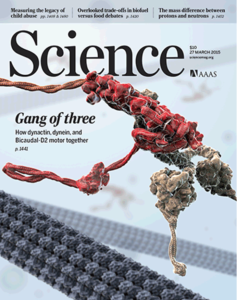
Illustration: Chris Bickel/Science
Each year, the prestigious journal Science lists the best scientific discoveries, drawing up a separate ranking. The editors of the magazine cast their eyes to the future, indicating the areas of greatest scientific interest in the coming years.
According to Science, what expects us will have to wait for the “scientific satisfactions” from experiments, large and small, that take place at the Large Hadron Collider (Large Hadron Collider, abbreviated LHC) in Geneva; or the work to analyze on genes that help organisms to adapt to a changing world; studies that are taking place in California, at the Lawrence Livermore Laboratory, on the nuclear fusion; from research on strengthening the immune system; from research on a vaccine against malaria.
Some of these issues are already the subject of speculation by the writers of science fiction and the predictions of Science give us the opportunity to speak of the relationship between science and science fiction. The words of the mathematician and astrophysicist Stephen Hawking say best: “science fiction today is often tomorrow’s science.”
We could draw a map of the relationships between scientific knowledge and science fiction, not to prove whether the science used in science fiction was true, or to prove the opposite, but namely that good science fiction is often plausible and realistic. Rather, we could indeed show how one can be seen as the mirror of the other and the many itineraries from the “real” to the “speculative fiction”, ofter also in the opposite direction.
To clarify the concept, once more we call Hawking to rescue. In the preface to the essay Physics of Star Trek by Krauss, Lawrence M. [Basic Books,2007] , he writes: “The science fiction like Star Trek it’s just a lot of fun, but also serves a serious purpose, which is to expand the human imagination. We are not yet able to boldly go where no one has gone before, but at least we can do it mentally. We explore how the human spirit can respond to future developments in science and we can speculate on how these developments could be. Between science fiction and science there are exchanges in both directions.”
, he writes: “The science fiction like Star Trek it’s just a lot of fun, but also serves a serious purpose, which is to expand the human imagination. We are not yet able to boldly go where no one has gone before, but at least we can do it mentally. We explore how the human spirit can respond to future developments in science and we can speculate on how these developments could be. Between science fiction and science there are exchanges in both directions.”
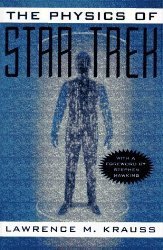
 I like best the predictions Asimov provided us in his novels, but Hawking centers the question. Science fiction is not, and should not be mistaken for, futurology. Science fiction is not a literature that predicts the future, but is a literature that bears a scientific point of view of all possible futures. It happens, of course, that a writer is able to predict a certain invention or scientific discovery, but when it happens it is a lucky shot, especially if it is not based on what are the current scientific knowledge and what can be their evolutions. Jules Verne, in this, was a master. It helps, as with Asimov, if the writer has a solid scientific background.
I like best the predictions Asimov provided us in his novels, but Hawking centers the question. Science fiction is not, and should not be mistaken for, futurology. Science fiction is not a literature that predicts the future, but is a literature that bears a scientific point of view of all possible futures. It happens, of course, that a writer is able to predict a certain invention or scientific discovery, but when it happens it is a lucky shot, especially if it is not based on what are the current scientific knowledge and what can be their evolutions. Jules Verne, in this, was a master. It helps, as with Asimov, if the writer has a solid scientific background.
What science fiction should do — and it performs admirably to the task — is to stimulate the reader to change, to ask questions rather than give answers, about our future, the developments of science, and its implications. There is no science fiction if the story is not there because of the scientific element and its impact in the society.
To expand — as Hawking says — the human imagination and figure out how we can react to changes brought about by the development of new technologies or scientific discoveries is something exceptional.
Massimo Marino is a scientist envisioning science fiction. He spent years at CERN and The Lawrence Berkeley Lab followed by lead positions with Apple, Inc. and the World Economic Forum. He is also co-founder of “Squares on Blue”, a Big Data Analytics service company.
Massimo currently lives in France and crosses the border with Switzerland multiple times daily, although he is no smuggler.
As a scientist writing science fiction, he went from smashing particles at accelerators at SLAC and CERN to smashing words on a computer screen.
He’s the author of multi-awarded Daimones Trilogy.
His novels have received the Seal of Excellency from both AwesomeIndies.net and IndiePENdents.org
• 2012 PRG Reviewer’s Choice Award Winner in Science Fiction
• 2013 Hall of Fame – Best in Science Fiction, Quality Reads UK Book Club
• 2013 PRG Reviewer’s Choice Award Winner in Science Fiction Series
• 2014 Finalist – Science Fiction – Indie Excellence Awards L.A.
• 2014 Award Winner – Science Fiction Honorable Mention – Readers’ Favorite Annual Awards
His novels are available from Amazon, Barnes & Noble (Nook), iTunes Apple Store, and many other retailers around the world.
Join his mailing list for new releases, or follow him on Facebook, Google+, and Twitter.
The post The Science in Science Fiction appeared first on § Author Massimo Marino.
March 26, 2015
Blue World – Jack Vance
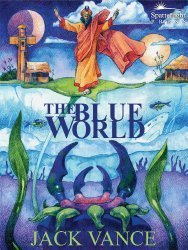
 Blue World has a basic but intriguing theme: a planet populated by the survivors of a space shipwreck, which have to fight for survival, cut off from civilization, and forced to regress to the level of pure survival.
Blue World has a basic but intriguing theme: a planet populated by the survivors of a space shipwreck, which have to fight for survival, cut off from civilization, and forced to regress to the level of pure survival.
Of course, the novel by Jack Vance is not original, countless are the worlds that have had this fate: the forgotten planet of Murray Leinster, Darkover by Marion Zimmer Bradley and last colonies of Raymond Chandler are just a few of these.
But Vance has complicated the lives of his shipwrecked criminals fleeing from their world of origin, making them fall on a planet entirely covered by water, where only the presence of huge floating vegetable (or maybe it’s just a colossal body) allows survival.
The plants have their trunks submerged in water, but huge leaves float like water lilies, hosting different forms of life and providing shelter and resources to the humans; the only dangers come from large crustaceans called Kragen, marine predators at the top of the food chain.
After several generations, the archipelago where the survivors found shelter is now home to about fifty thousand people, the islands bustle, society is divided into castes that reflect the crimes of the original settlers: embezzlers, arsonists, forgers, thieves, and other categories gave rise to a peaceful society, almost a water Eden.
Like any self-respecting Eden, even this one has its Snake, a huge Kragen, twenty meters long, claims to be nourished by the population of the islands in exchange for the protection provided against smaller specimens.
Of course, someone found a way to take advantage of the situation, the Intercessors: well situated in the social fabric and live in luxury, whose sole task is to talk to King Kragen and invoke his benevolence, nothing strange that it is in their interest to maintain the status quo.
Skalr Hast, a young forger, officer is the communication towers that allow the exchange of messages between the islands, makes the first act of rebellion: he kills a small Kragen who was robbing his cultivation of sponges.
This gesture sets off a chain of events that will forever change the lives of the inhabitants of the islands, divided between obedience to the old master and the desire for freedom.
The Blue World is one of the few novels from Vance that is not part of a series. It is a fairly conventional history, whose greatest value lies in the description of the strange society that thrives because of what offers the ocean.
is one of the few novels from Vance that is not part of a series. It is a fairly conventional history, whose greatest value lies in the description of the strange society that thrives because of what offers the ocean.
The theme of the exploitation of man by an alien race, that Vance uses quite frequently (sometimes reversing the situation), and the action scenes are in the background, prominent is the description of a group of humans who have completely wrong ideas about their ancestors. Fascinating is the way in which the author describes a non-violent society, whose only contact with their origins are books that are difficult to interpret, and yet find the strength to rediscover the pride of being free.
We are not bored with endless descriptions of customs and bizarre and unusual social dynamics, or philosophical disputes, Vance does not get lost in too many descriptions, but sweep the portrait of this world with a few clever touches, while the story moves forward with a good pace.
We are not, however, in front of one of the masterpieces of the Californian writer, the novel is far too linear and well away from the complexity shown in his other creations.
Having said that, Blue World remains a story that is more than enjoyable, that can be read in a couple of sessions, and with pleasure. For fans of Vance a chance not to be missed to read a novel that doesn’t deserve to be forgotten.
Massimo Marino is a scientist envisioning science fiction. He spent years at CERN and The Lawrence Berkeley Lab followed by lead positions with Apple, Inc. and the World Economic Forum. He is also co-founder of “Squares on Blue”, a Big Data Analytics service company.
Massimo currently lives in France and crosses the border with Switzerland multiple times daily, although he is no smuggler.
As a scientist writing science fiction, he went from smashing particles at accelerators at SLAC and CERN to smashing words on a computer screen.
He’s the author of multi-awarded Daimones Trilogy.
His novels have received the Seal of Excellency from both AwesomeIndies.net and IndiePENdents.org
• 2012 PRG Reviewer’s Choice Award Winner in Science Fiction
• 2013 Hall of Fame – Best in Science Fiction, Quality Reads UK Book Club
• 2013 PRG Reviewer’s Choice Award Winner in Science Fiction Series
• 2014 Finalist – Science Fiction – Indie Excellence Awards L.A.
• 2014 Award Winner – Science Fiction Honorable Mention – Readers’ Favorite Annual Awards
His novels are available from Amazon, Barnes & Noble (Nook), iTunes Apple Store, and many other retailers around the world.
Join his mailing list for new releases, or follow him on Facebook, Google+, and Twitter.
The post Blue World – Jack Vance appeared first on § Author Massimo Marino.
March 19, 2015
YA Science Fiction
Science Fiction is the hottest genre right now. Add in some best selling authors and Young Adult books and you have an event not to be missed. So come celebrate these awesome YA Science Fiction Authors with us! Giveaways, book exclusives, games and more! Young Adult Science Fiction Multi-Author Event March 19th from 5:30-9PM. You can enter the big $100 Amazon Gift Card Giveaway at the bottom of this post! Don’t miss it!
Join the event!
The authors are excited to see you on the 19th but in the meantime, check out these amazing titles!


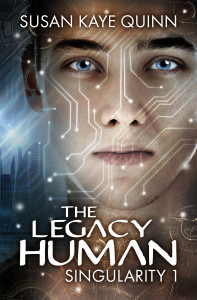
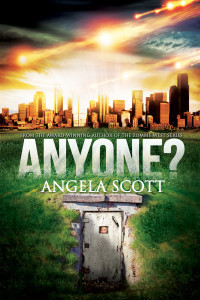
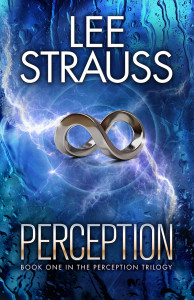
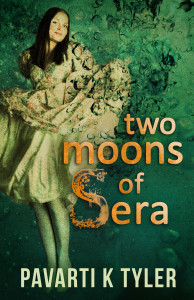
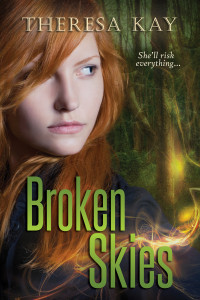
Schedule of events!
5:30-6:00 – Angela Scott
6:00-6:30 – Laxmi Hariharan
6:30-7:00 – Theresa Kay
7:00-7:30 – Lee Strauss
7:30-8:00 – Pavarti K Tyler
8:00-8:30 – Susan Kaye Quinn
8:30-9:00 – Joel Ohman
9:00 – Pavarti (Announce Rafflecopter winners – Enter at the bottom of this post!)
The post YA Science Fiction appeared first on § Author Massimo Marino.
March 15, 2015
Alas, Babylon – Pat Frank
Maybe, we can scarcely imagine the climate of terror in which the world had plunged in the fifties, when the specter of nuclear war began to get more and more threatening, but you can get an idea by reading the many science fiction novels on the subject.
The belief in progress ended with the horrors of Nazism, and the flashes of Hiroshima and Nagasaki lit a threatening and uncertain future, every scientific breakthrough increased the chances of destruction and the number of potential victims, so no wonder the flourishing of Holocaust final works appeared in those years, the 50s and 60s.
Written in 1959, “Alas, Babylon ” is a good example of the apocalyptic genre, a nuclear war in this case. The story, except very short excursions in the eastern Mediterranean, focuses on the adventures of a small Florida community, the town of Fort Repose.
” is a good example of the apocalyptic genre, a nuclear war in this case. The story, except very short excursions in the eastern Mediterranean, focuses on the adventures of a small Florida community, the town of Fort Repose.
Randy Braggs is a lawyer who has not had much luck in both his career and in politics, and is limited to scrape a living in the tranquility of the family home, working when it happens and without committing too much to the sentimental side.
But one day a message of his brother Mark, officer with the Air Force Strategic Command, upsets this lazy and quiet life, the message contains only two words, “Alas, Babylon”, which is the code the two brothers have to mean the Atomic war is imminent.
While waiting for the arrival of his wife and the two sons of Mark, the young lawyer tries, in an approximate way, to prepare for the catastrophe that punctually arrives.
Fort Repose is located in a location relatively spared by the explosions and radioactive fallout, but quickly the structures of society crumble, no supply of food or fuel can come from the outside, money loses value, old racist taboos cease to have a meaning, even communications with the outside end with the exhaustion of the batteries of the radio.
The reactions are different, there are those who committed suicide and those who cling to the place and old established habits, a slower way to commit suicide, the ones who become greedy and those who don’t forget charity and generosity, those who give in to brigandage and those trying to bring order.
Randy is one of these last, the emergency brings out his best qualities, and he becomes the guidance of a small community that refuses to surrender.
Author more interested in his character’s psychological aspects than adventure stunts, Pat Frank gives us a portrait of a city that suddenly finds itself having to live in the Middle Ages, without electricity or vehicles, with barter as the highest form of finance, and with the nightmare of unstoppable diseases such as typhoid and smallpox.
The characters that populate the story are numerous and well defined, the central part of the novel lives on their feelings and their reactions to the catastrophe, the despaired banker Quisenberry, suddenly no longer with any power or purpose, the renewed enthusiasm of Alice, the librarian, that no longer has to face competition from television and air conditioning.
This choral fresco is the strong point of the novel; Frank does not describe the events leading up to the war nor dwells on the events during the atomic war, we only know that the United States then has a female president, and (perhaps) have won the war, but at a terrible price.
What’s missing doesn’t have a great importance in a novel like that (think “The Road ” of Cormac McCarthy), the point which leaves me some doubt is the relative ease with which Fort Repose survives and thrives through what is after all a nuclear attack: apart someone punished in the new society for his greed, nobody dies from radiations, problems are always solved easily, sometimes in a funny way (the use of an old Ford A to consume little fuel).
” of Cormac McCarthy), the point which leaves me some doubt is the relative ease with which Fort Repose survives and thrives through what is after all a nuclear attack: apart someone punished in the new society for his greed, nobody dies from radiations, problems are always solved easily, sometimes in a funny way (the use of an old Ford A to consume little fuel).
Other novels on the subject were less optimistic, inevitable is to think of “On the Beach ” by Nevil Shute, where humanity undergoes a slow but inexorable end due to the radiation and fallout.
” by Nevil Shute, where humanity undergoes a slow but inexorable end due to the radiation and fallout.
Ultimately, “Alas, Babylon ” is a good novel, focusing on psychology more than on action, which has not suffered too much the passage of the time, but too optimistic for my tastes (given the subject), but still a nice story to read, the result of a past that will hopefully never come back.
” is a good novel, focusing on psychology more than on action, which has not suffered too much the passage of the time, but too optimistic for my tastes (given the subject), but still a nice story to read, the result of a past that will hopefully never come back.
Massimo Marino is a scientist envisioning science fiction. He spent years at CERN and The Lawrence Berkeley Lab followed by lead positions with Apple, Inc. and the World Economic Forum. He is also co-founder of “Squares on Blue”, a Big Data Analytics service company.
Massimo currently lives in France and crosses the border with Switzerland multiple times daily, although he is no smuggler.
As a scientist writing science fiction, he went from smashing particles at accelerators at SLAC and CERN to smashing words on a computer screen.
He’s the author of multi-awarded Daimones Trilogy.
His novels have received the Seal of Excellency from both AwesomeIndies.net and IndiePENdents.org
• 2012 PRG Reviewer’s Choice Award Winner in Science Fiction
• 2013 Hall of Fame – Best in Science Fiction, Quality Reads UK Book Club
• 2013 PRG Reviewer’s Choice Award Winner in Science Fiction Series
• 2014 Finalist – Science Fiction – Indie Excellence Awards L.A.
• 2014 Award Winner – Science Fiction Honorable Mention – Readers’ Favorite Annual Awards
His novels are available from Amazon, Barnes & Noble (Nook), iTunes Apple Store, and many other retailers around the world.
Join his mailing list for new releases, or follow him on Facebook, Google+, and Twitter.
The post Alas, Babylon – Pat Frank appeared first on § Author Massimo Marino.
March 8, 2015
The “impossible” Mistakes of Traditionally Published Books.
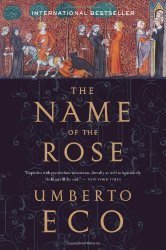
 Of the problem of translation and accuracy in books “traditionally published.”
Of the problem of translation and accuracy in books “traditionally published.”
I just had a disagreement with a sympathetic reader (a French) who pointed out to me a gross error in a book known to all of us: “The Name of the Rose” by Umberto Eco.
She — obviously — was reading the French translation and sold by a well-known publishing house, one of the Big 5.
In the French edition, towards p. 51-52, Adso describes the wonders of the herbarium and cites a number of plants and flowers, used by the monks for ornamental and medicinal purposes, and ends the list with “les baumes du Perou.”
“Horreur,” exclaimed my friend. “What a blunder by Umberto Eco.”
Uhmm, indeed the error is huge, Peru did not exist nor the American continent was even known at the times in which the action takes place in the novel.
My immediate response has been, “whatever, no way Umberto Eco made such an error. The error is with the translator.”
“No, impossible, with a publishing house as the , no one could make these mistakes among those professionals.”
And instead…
Umberto Eco, in the Italian version, speaks of the “opobalsami”, well known already in the ancient Greece and to doctors in the Roman Empire, also under the collective name of balms of Galaad, ancient city Judea. Used to cure cuts and wounds, and its infusion used against stomach ache.
Eco is redeemed, but not the infallibility of books produced traditionally. Perhaps, if Eco had self-published his “Name” in French, he would have immediately discovered the idiocy of the translator and saved the readers a moment of historical and literary disgust.
The post The “impossible” Mistakes of Traditionally Published Books. appeared first on § Author Massimo Marino.
March 4, 2015
Night Walk – Bob Shaw
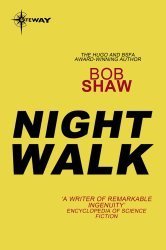
 Born in Belfast in 1931, graduated in mechanical engineering, Robert Shaw began writing fiction in 1954, but in 1975 he left his work as a designer aircraft to become a full-time writer.
Born in Belfast in 1931, graduated in mechanical engineering, Robert Shaw began writing fiction in 1954, but in 1975 he left his work as a designer aircraft to become a full-time writer.
Author of scientifically accurate novels, Shaw is one of the most representative of the Anglo-Saxon science fiction, but also one of the most underrated.
Bob Shaw has left us in 1996.
In this novel, the slow colonization of space by mankind, in a not too distant future, is under way. Starships can cross great distances through the portals, singularity points in space where the normal rules of space-time are not longer valid, precursors of the Einstein-Rosen Bridges.
The problem with the portals is that there is no way to know what your destination will be unless you try them, in order to mark safe routes it is necessary to send through the portals million probes, few of which will ever return.
The routes plotted in this way are terribly winding, for example, between the Earth and the planet M Luther there are eighty-thousand portals, each of which must be crossed in a certain way to reach final destination.
The habitable planets being discovered are very few (a fewer number than the ones we know of today), and when the news spread that the ruling theocracy on M Luther has discovered a planet similar to the Earth the government sets its network of spies to work.
Sam Tallon, one of the agents, manages to get hold of the precious coordinates, but is captured by the dreaded secret police of M Luther and, during an escape attempt, loses both eyes.
Completely blind and closed in a prison where escape is impossible, Tallon refuses to give up, and begins to develop a plan to return to Earth with his precious information.
On his way, he will find all sorts of dangers, Cherkassky to name one, the fierce leader of the secret police, and eighty-thousand doors space to go through, but also an unexpected help.
The Irish author is known for his great trilogies and the stories based on the slowglass technology. He works based on great ideas, but Night Walk is not remembered as one of the best novels, but it was a good enough read that perhaps its marks should have been higher than they’ve been.
is not remembered as one of the best novels, but it was a good enough read that perhaps its marks should have been higher than they’ve been.
Indeed, in the history of Sam Tallon, there are all the elements that characterize Bob Shaw, a solid plot, twists and tension, believable characters, and a protagonist with physical problems, but able to accept them and overcome his condition.
The idea of the portals, that justifies the initial situation, although far from fantastic Dyson spheres or weird wooden spaceships in the Orbitsville and Pterpha cycles, is good given it was written in 1967, although it must be said that for Shaw technology and technological innovations and their impacts and changes in society have always been a forte.
Ultimately, Night Walk is a good novel, that will please its readers.
Massimo Marino is a scientist envisioning science fiction. He spent years at CERN and The Lawrence Berkeley Lab followed by lead positions with Apple, Inc. and the World Economic Forum. He is also co-founder of “Squares on Blue”, a Big Data Analytics service company.
Massimo currently lives in France and crosses the border with Switzerland multiple times daily, although he is no smuggler.
As a scientist writing science fiction, he went from smashing particles at accelerators at SLAC and CERN to smashing words on a computer screen.
He’s the author of multi-awarded Daimones Trilogy.
His novels have received the Seal of Excellency from both AwesomeIndies.net and IndiePENdents.org
• 2012 PRG Reviewer’s Choice Award Winner in Science Fiction
• 2013 Hall of Fame – Best in Science Fiction, Quality Reads UK Book Club
• 2013 PRG Reviewer’s Choice Award Winner in Science Fiction Series
• 2014 Finalist – Science Fiction – Indie Excellence Awards L.A.
• 2014 Award Winner – Science Fiction Honorable Mention – Readers’ Favorite Annual Awards
His novels are available from Amazon, Barnes & Noble (Nook), iTunes Apple Store, and many other retailers around the world.
Join his mailing list for new releases, or follow him on Facebook, Google+, and Twitter.
The post Night Walk – Bob Shaw appeared first on § Author Massimo Marino.
February 26, 2015
Little Brother – Cory Doctorow
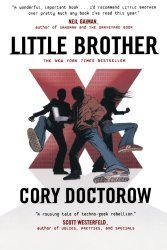
 Yallow Marcus and his friends are seventeen, live into a near future Earth, and do the things kids normally do at their age. The schools they attend are equipped with futuristic surveillance systems — based on gait pattern recognition and real-time tracking of RFID tags inserted in their books — and the lessons they follow make use of schoolbooks of the last generation. Theoretically, they’re always under the control of the school authorities, but the technology does not prevent them to carve out the necessary brackets of private leisure time and engage in more constructive pursuits. Through a deep understanding of the secrets of information technology they are masters of their time, with all due respect for the adults who grew up in a world with low digital penetration, and are just beyond the threshold of digital illiteracy.
Yallow Marcus and his friends are seventeen, live into a near future Earth, and do the things kids normally do at their age. The schools they attend are equipped with futuristic surveillance systems — based on gait pattern recognition and real-time tracking of RFID tags inserted in their books — and the lessons they follow make use of schoolbooks of the last generation. Theoretically, they’re always under the control of the school authorities, but the technology does not prevent them to carve out the necessary brackets of private leisure time and engage in more constructive pursuits. Through a deep understanding of the secrets of information technology they are masters of their time, with all due respect for the adults who grew up in a world with low digital penetration, and are just beyond the threshold of digital illiteracy.
To Cory Doctorow it only takes twenty pages to paint the scenario of a peaceful utopian youthful rebellion and shred the idyll into pieces. The life of Marcus, Darryl, Vanessa and Jolu — four regular kids like so many Americans — stops suddenly one morning when the horror erupts in their universe and precipitates them into the coils of a dystopian nightmare. The four are just “escaped” from school to devote their time to the nth stage of a town alternate reality game that is popular between gangs of teenagers in San Francisco, when terrorists blew up with a dirty-bomb the Bay Bridge, “true bridge workforce “of the city, as Doctorow writes.
As if the accident would evoke other misfortunes, the four are in the wrong place at the wrong time and a word too much lashed out against the authorities intervened to guard the area has the tragic effect of to send them to a prison full of abusive interrogations that border with psychological torture.
Once released, Marcus discovers that Darryl has not shared the fate of the group and has disappeared on American soil. He is believed dead by Marcus, and thus becomes the spring that triggers his rebellion. With the force of his knowledge in technology, and behind the nickname of M1k3y, Marcus Yallow organizes a clandestine network that makes use of modified consoles equipped with an hyper-secure operating system, not surprisingly called Paranoid Linux, to put up a resistance to the extreme control system put in place by the government. From Xbox to Xnet, from the games to the war: for Marcus begins this way a difficult ideological and moral battle, which is not limited to a simple personal vendetta, but aims at returning dignity to the American citizens that someone, hiding behind the threat of Al Qaeda , decided to vilify it for personal advantage. And if that someone happens to act under the banner of the infamous Department of Homeland Security, then the war will be hard, ruthless and an endless nightmare until the enemy will finally be defeated. (Incidentally, the Department of Homeland Security, or DHS, established by the Bush administration after September 11, 2001 as part of the extraordinary measures taken to tackle the crisis and “ensure” national security, has shown that the reality matches fiction with a sad episode reported by the same Doctorow in his blog that saw the main science fiction writer and Canadian biologist Peter Watts mistreated by Michigan border guards.)
With this book, published by Tor Books in 2008, Cory Doctorow, the already activist of Electronic Frontier Foundation and co-editor of Boing Boing, the most popular blog in the world, has succeeded in the dual enterprise to renew the tradition of dystopian science fiction that has its stronghold in 1984 by George Orwell (honored explicitly in the title, “Little Brother”) and to produce a sort of a small manual of civil resistance for the new generations.
by George Orwell (honored explicitly in the title, “Little Brother”) and to produce a sort of a small manual of civil resistance for the new generations.
Little Brother is a work of denunciation, animated not by an abstract ideal, but by the belief that certain ideas – incontrovertible, universal, absolute – must necessarily find their application in our reality. To this end, it is functional for the author to operate a rediscovery of the spirit of democracy by digging into the roots of contemporary America, from the season of disputes and the movement for Civil Liberties that since the ’60s had the its hub in San Francisco. And it is no coincidence if the heart of the book is taken up by a discussion of the constitutional principles and in particular the importance of the First Amendment, with an emphasis on a passage from the Declaration of Independence in Philadelphia ratified in 1776:
Governments are instituted among Men, deriving their just powers from the consent of the governed, — That whenever any Form of Government becomes destructive of these ends, it is the Right of the People to alter or to abolish it, and to institute new Government, laying its foundation on such principles and organizing its powers in such form, as to them shall seem most likely to effect their Safety and Happiness.
The dilemma between personal freedom and collective security captures the essence of the novel. A false dilemma, though, as Marcus continues to believe despite the insistence of bad teachers, as it is not by denying one that we’ll be able to guarantee the other. Indeed, major constraints and restrictions are imposed on individual freedom, the greater the dangers that this entails for the nation. But the challenge is to prove the groundlessness of this premises against common sense that has prevailed in a public opinion directed by the government with the support of the media.
Doctorow plays respectfully with Orwell’s masterpiece, without the fear of overturning the predictions. The Little Brother is the seventeen year old Marcus Yallow, known to the people in the network as M1k3y, but already known as w1n5t0n before his previous electronic identity were burned. It is thanks to him that Big Brother is countered in a network of Little Brothers and Little Sisters like him and like Ange, perfect in the role of young pasionaria. The author symbolically talks through his protagonist, and critics the social fabric in the same USA. It is a view far from trivial: in an era marked by the dematerialization of the warfronts and inevitably conditioned by the party game, Doctorow has the courage to raise his finger and point it against those who think they are legitimated by circumstances to abuse the power that has been conferred to them. His message shares the spirit of Captain America by John Ney Rieber, a staunch defender of freedom as a fundamental value of American democracy.
It’s been several generations since Winston Smith of George Orwell, but Marcus / M1k3y would be a worthy heir, perhaps more reckless but surely even more awake and dangerous despite his brave ancestor. Unlike Winston, Marcus knows that knowledge is the real secret of power. Not privacy, but security, as is also stated in the two afterwords from Bruce Schneier (expert of computer security and encryption) and Andrew “Bunnie” Huang (the MIT researcher who first hacked the Xbox).
Little Brother teaches us that only bad security is based on secrecy and it is true a lesson. For this, M1k3y manages to keep in check the DHS and its officers, convinced they have the city and the network under control. The Department wants to silence the voices of dissent by deceiving citizens that security will only come through total control. M1k3y uses their weapons to force transparency on the same controllers, and sheds light on the misdeeds of the power, of their ideas, and through the support of investigative journalism.
In the novel, also the fourth power rediscovers its crucial role in contemporary society. Even in this, as in the resolution of the dilemma freedom / security, Doctorow gives evidence of a brave optimism, but it also prove to be convincing.
Massimo Marino is a scientist envisioning science fiction. He spent years at CERN and The Lawrence Berkeley Lab followed by lead positions with Apple, Inc. and the World Economic Forum. He is also co-founder of “Squares on Blue”, a Big Data Analytics service company.
Massimo currently lives in France and crosses the border with Switzerland multiple times daily, although he is no smuggler.
As a scientist writing science fiction, he went from smashing particles at accelerators at SLAC and CERN to smashing words on a computer screen.
He’s the author of multi-awarded Daimones Trilogy.
His novels have received the Seal of Excellency from both AwesomeIndies.net and IndiePENdents.org
• 2012 PRG Reviewer’s Choice Award Winner in Science Fiction
• 2013 Hall of Fame – Best in Science Fiction, Quality Reads UK Book Club
• 2013 PRG Reviewer’s Choice Award Winner in Science Fiction Series
• 2014 Finalist – Science Fiction – Indie Excellence Awards L.A.
• 2014 Award Winner – Science Fiction Honorable Mention – Readers’ Favorite Annual Awards
His novels are available from Amazon, Barnes & Noble (Nook), iTunes Apple Store, and many other retailers around the world.
Join his mailing list for new releases, or follow him on Facebook, Google+, and Twitter.
The post Little Brother – Cory Doctorow appeared first on § Author Massimo Marino.
February 19, 2015
The World of Null-A – Alfred E. Van Vogt
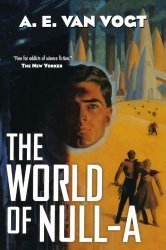
 Author at the tip of the so-called “golden age,” Alfred E. Van Vogt wrote several novels that have influenced generations of readers and writers. The World of Null-A
Author at the tip of the so-called “golden age,” Alfred E. Van Vogt wrote several novels that have influenced generations of readers and writers. The World of Null-A is one of his most representative works, and like is the case with other novels of the Canadian author, it will divide readers into enthusiastic supporters and fierce detractors.
is one of his most representative works, and like is the case with other novels of the Canadian author, it will divide readers into enthusiastic supporters and fierce detractors.
The year is 2650, in the Town of the Machine, Gilbert Gosseyn is waiting for the start of the Races, the selections that determine the social position the participants will occupy.
The giant artificial intelligence that leads the proof will select the best minds, in fact putting them in positions of power or even allowing the emigration to Venus, the world where only those with a fully developed Null-A mind can access.
Despite the great opportunity, the young man is sad, his wife died recently, and will not have the opportunity to compete with him; but fate has other low blows, a fellow accused him of having a false identity, claiming that he had never seen him in Cress Village, his birthplace.
To clarify the matter, Gosseyn undergoes polygraph, but this confirms the incredible accusations. Without being able to clarify his true identity, the young man is expelled from the Races and from the contestants residence.
The only good news is that his wife, Patricia Hardie, would be alive, at least according to the shocking statements of his accuser, but the news that his entire world would be nothing but a fiction is difficult to accept.
Soon, the situation becomes even more difficult (or confused), Gosseyn meets, in suspicious circumstances, a young woman who turns out to be Patricia Hardie, quite different from how he remembered her, and what’s more she’s the daughter of the President of Earth. Gosseyn realizes that the girl is a trap, he is indeed captured by the men of her father, and he understands that the President has found a way to trick the machine: he and his men are in positions of prestige and power all while not followers of Null-A, and they plot to bring down the system of the Races.
The young man, with the help of Patricia, manages to escape, and tries to warn the machine (a powerful Artificial Intelligence) of the conspiracy. Gosseyn is intercepted by the President’s men and hit several times by powerful laser beams. It looks like he does not have a chance to escape alive.
Although he is sure to have been killed, Gosseyn wakes up, unharmed, in a forest, and the surprise of being alive is added to that of the discovery to be on Venus, the promised land for all Null-A.
Before him, deep mysteries open up, mysterious forces are at work to thwart the threat to the machine, and he will discover that the threats are more serious than he imagined. Gosseyn will develop the potential of his exceptional mind beyond all limits, but to do so he will have to figure out who has implanted false memories in him, and how he has survive death.
Null-A is the novel that, according to the same author, has had more success among those written by Van Vogt. The first part appeared in the August 1945 edition of Astounding Science-Fiction, and all readers classified it as the best story in that number, as well as the second part the month later. The third episode is also ranked first by readers, although not unanimously.
Subsequently, Van Vogt rewrote the story in a single volume, adjusting some inconsistencies. After this first revision, made in 1948, followed another one in 1970.
Based on the theories of the Polish scientist Alfred Korzybski, founder of the theory of “general semantics” Null-A assumes that the human mind can overcome the limitations of thought A (Aristotelian) changing its system of symbols and language, and learning to reason better, becoming a Null-A mind.
But the theoretical basis of a doctrine that never had much success have little importance, Null-A is a novel that can drawn you into a whirlpool of adventures and surprises, a descent down the rapids of a stream that prevents to analyze what happens: questionable scientific thesis, coming and going between the planets, captures and escapes without stopping, strange behaviors of some characters, some disappearing leaving no traces, after all there is no time to analyze the rocks when you’re going down on a miserable boat that threatens to topple over at any moment.
It goes without saying that anyone who’s not dragged in will see all the flaws of this novel, and will not feel any pleasure in reading it, and if you do not like too complex and confusing stories you will probably find yourself in this category of readers.
Massimo Marino is a scientist envisioning science fiction. He spent years at CERN and The Lawrence Berkeley Lab followed by lead positions with Apple, Inc. and the World Economic Forum. He is also co-founder of “Squares on Blue”, a Big Data Analytics service company.
Massimo currently lives in France and crosses the border with Switzerland multiple times daily, although he is no smuggler.
As a scientist writing science fiction, he went from smashing particles at accelerators at SLAC and CERN to smashing words on a computer screen.
He’s the author of multi-awarded Daimones Trilogy.
His novels have received the Seal of Excellency from both AwesomeIndies.net and IndiePENdents.org
• 2012 PRG Reviewer’s Choice Award Winner in Science Fiction
• 2013 Hall of Fame – Best in Science Fiction, Quality Reads UK Book Club
• 2013 PRG Reviewer’s Choice Award Winner in Science Fiction Series
• 2014 Finalist – Science Fiction – Indie Excellence Awards L.A.
• 2014 Award Winner – Science Fiction Honorable Mention – Readers’ Favorite Annual Awards
His novels are available from Amazon, Barnes & Noble (Nook), iTunes Apple Store, and many other retailers around the world.
Join his mailing list for new releases, or follow him on Facebook, Google+, and Twitter.
The post The World of Null-A – Alfred E. Van Vogt appeared first on § Author Massimo Marino.

